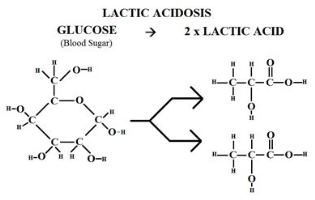
Suspension Trauma
Those writing fall protection plans must understand the hazards of harness hang syndrome in fall protection.
- By Spencer Lane
- Jan 01, 2017
After a worker falls and is caught by his fall protection harness, the danger is not over. The fallen worker’s blood circulation is restricted, causing a condition known as suspension trauma.
In the fall protection industry there is a continuing debate on the level of risk from suspension trauma. While there is limited scientific research directly focused on suspension trauma, there is sufficient knowledge of the body’s physiology to illustrate that this condition can be fatal.
Introduction
In fall protection, one of the methods for protecting workers from a fall is fall arrest. Fall arrest uses personal protective equipment (PPE), including a fall protection harness and attached lanyard that is used to connect a worker to an anchor point. With this gear, should the worker fall, the energy of the fall is absorbed by the lanyard and the worker is prevented from hitting the ground. However, once the fall has been arrested and the worker stopped, he is still left suspended in his fall protection harness. During this time in suspension, the most subtle and sinister hazard in fall protection, suspension trauma, begins to set in.
In this article the chemistry and physiology of suspension trauma will be explored, both during suspension and after the fall victim is brought down to the ground, and also ways to protect against this hazard. For safety specialists, especially those writing fall protection plans, this information is important to understand so that the hazard can be mitigated and rescue properly planned. For emergency medical personnel responding to a rescue of a suspended worker, knowing the physiology behind suspension trauma is key in providing proper treatment to the fall victim.
What is Suspension Trauma?
Suspension trauma, also known as harness hang syndrome and orthostatic intolerance, occurs after a worker has fallen into a fall arrest harness and is suspended in a hanging position until rescue arrives. When hanging in a fall harness, the leg straps support the body’s weight. During this time, the leg straps of the fall protection harness crush the femoral arteries on the inside of the legs, cutting off blood circulation.
Additionally, when the leg muscles are relaxed, veins in the legs can expand dramatically (known as vasodilation). Because the leg muscles are not being used to stand up, they are not contracting and therefore not preventing the veins from expanding. This lack of constriction from the leg muscles allows blood to gather in the legs rather than returning to the heart and lungs for recirculation, an effect known as venous pooling. Without constraint from the leg muscles, the expansion of blood veins in the legs can result in a 20 percent loss in blood circulation.
The loss of circulation causes the heart to work harder to keep the brain and vital organs supplied with blood. This results in nausea, unconsciousness, and a drop in blood pressure and heart rate. This part of suspension trauma is the onset of circulatory shock.
The Body Chemistry of Suspension Trauma
When blood pools and becomes trapped in an extremity, the blood can no longer deliver oxygen from the lungs. To continue to produce energy to sustain life, the cells in the extremity undergo anaerobic respiration (without oxygen). During anaerobic respiration, glucose (blood sugar, C6H12O6) breaks down in half into lactic acid (C3H6O3) in a process known as lactic acidosis (see the figure).

Without blood circulation in the legs, the lactic acid builds up in the stagnant blood. This buildup of acid-blood is then released when the worker is brought down and circulation restored. High levels of acid flooding the body can overwhelm the kidneys, liver, and even result in heart failure.
Trauma Straps
Fortunately, there is a simple solution to protect against suspension trauma: personal protective equipment known as trauma straps. Trauma straps are a pair of straps, one with hooks in it and the other with loops for the hooks to attach to. They are coiled up in pouches and attached to the fall harness at the hips. When a worker falls and comes to rest, he would uncoil the straps, hook them together, and brace his weight against the straps. This allows the fallen worker to stand up in his fall harness, utilizing his leg muscles, taking weight off of his arteries, and restoring blood circulation until help arrives.
Because of this, it is important to have trauma straps on all fall protection harnesses. Unfortunately, some workers believe that hip pouches get in the way of tool bags or other equipment, and so they remove the trauma straps. Also, many fall protection equipment companies manufacture their fall protection harnesses standard with trauma straps but, due to the wide variety of harness manufacturers and harness designs, not all models come with trauma straps as a standard feature.
Rescue
If a worker falls and the force of the impact is great enough, the worker may pass out. In this case, the worker would not be able to deploy the trauma straps and will be left hanging in his harness, without leg support, until help arrives. Because of this, it is important to have a rescue plan in place.
In a technical bulletin on suspension trauma, OSHA identified that suspension trauma could be fatal within 30 minutes of the initial fall. This 30-minute window is what OSHA refers to when it says that a fall protection plan must contain plans for a "prompt" rescue. It is also important for rescuers and those writing fall plans to understand the hazards present after a worker has been brought down, from the lactic acid built up in the legs.
Conclusion
Suspension trauma poses a serious risk to workers at heights. The physiological response to the known symptoms of suspension trauma confirms that this hazard can be lethal. However, there are simple steps that can be taken to mitigate the hazard of suspension trauma, including trauma straps on all fall gear, a fall protection plan for all work at heights that includes a rescue plan, and training on the hazards within the use of fall protection equipment.
With greater knowledge of what suspension trauma is and how it affects the body, we can better plan for the hazards and continue to improve the safety of our work.
References
1. "ANSI Z359.11 Safety Requirements for Full Body Harnesses" ANSI Z359 Fall Protection Code, 2007. Industrial Safety Standard.
2. http://www.asse.org/professionalaffairs/bosc/interviews/randall-wingfield2
3. https://www.osha.gov/dts/shib/shib032404.html
4. http://www.ncbi.nlm.nih.gov/pmc/articles/PMC2658225/
This article originally appeared in the January 2017 issue of Occupational Health & Safety.